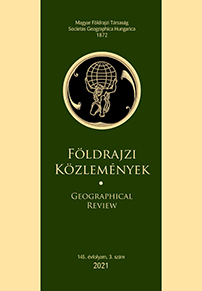To Open or Not To Open? Ventilation in the Pilis Caves in the Light of Geochemical Data
Abstract
Speleothem formations are one of the most important and informative objects in paleoclimatological research. However, in order to interpret the data that reflect environmental conditions, we have to know the operation of the given cave, and it should be determined how the composition of the carbonate formed at the given site is related to the changes in the environmental parameters. The study presents the results of stable isotope geochemical analysis of speleothem formations and carbonate precipitated on glass plates collected in the Vacska Cave (Pilis Hills). The youngest layer of carbonate formations, formed in the last 1-2 decades, shows an isotope fractionation sign indicating strong ventilation, with the exception of a single site farthest from the entrance to the cave. The isotope shift was also accompanied by a change in carbonate fabric. Preceding the fabric change, the carbonate of the speleothem formations did not show ventilation-related shifts in the isotope compositions, suggesting that the exploration and opening of the cave areas may have caused the change. Based on this, we recommend the installation of local closures in the Vacska Cave and in the entire Ariadne cave system. The study provides a good example of how the results of basic research can be utilized in practical environmental protection, in the preservation of a strictly protected cave environment.
Copyright (c) 2021 Attila Demény, Ágnes Berentés , György Czuppon, Richárd Kovács, Szabolcs Leél-Őssy, Gergely Surányi

This work is licensed under a Creative Commons Attribution-NonCommercial-NoDerivatives 4.0 International License.



